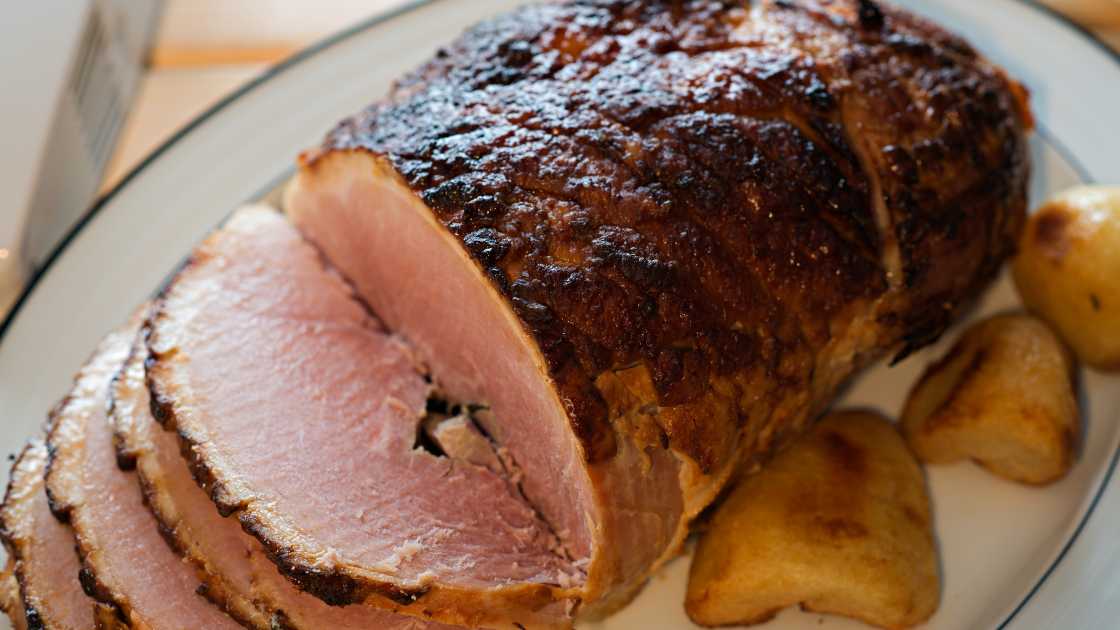Gammon is a versatile and flavorful cut of pork that can be enjoyed in various dishes, from a classic Sunday roast to a tasty ham sandwich. Whether you’re a seasoned chef or a kitchen novice, cooking gammon can be a straightforward and rewarding experience. In this article, we’ll take you through the steps on how to cook gammon to perfection, covering everything from preparation to serving.
There are 5 Steps to Cook Gammon to Perfection
Choosing the Right Gammon
Before you start cooking, it’s essential to select the right gammon joint. Here are some tips to consider:
Fresh vs. Cured:
You can choose between fresh gammon, which is unprocessed, or cured gammon, often sold as “green” or “smoked.” Cured gammon has a distinct flavor and requires less seasoning.
Bone-In or Boneless:
Bone-in gammon tends to have more flavor, while boneless gammon is easier to carve. The choice depends on your preference and the dish you plan to prepare.
Weight:
Consider the size of the gammon joint based on the number of servings you need. A general guideline is about 150-200 grams (5-7 ounces) per person.
Preparing the Gammon
Once you have your gammon joint, it’s time to prepare it for cooking:
Soaking:
If you have a cured gammon joint, you may want to soak it in cold water for several hours or overnight to reduce its saltiness. Change the water a few times during soaking.
Rinsing and Patting Dry:
Rinse the gammon under cold running water to remove any remaining salt or impurities. Pat it dry with paper towels.
Scoring:
Use a sharp knife to lightly score the skin in a crisscross pattern. Scoring helps the fat render during cooking and results in a crispy, delicious crackling.
Cooking Methods
There are several methods you can use to cook gammon:
Boiling:
Boiling is a traditional method that results in tender and moist gammon. Place the gammon in a large pot, cover it with cold water, and bring it to a boil. Simmer for 20-25 minutes per 500 grams (1 pound) of gammon. You can add flavor by using herbs, spices, and vegetables in the cooking liquid.
Roasting:
Roasting is another popular method that produces a flavorful gammon joint with crispy crackling. Preheat your oven to 180°C (350°F) and roast the gammon for about 30 minutes per 500 grams (1 pound), or until the internal temperature reaches 70°C (160°F). Basting with a glaze or marinade can enhance the flavor.
Slow Cooking:
Slow cooking is perfect for achieving tender and succulent gammon. Place the gammon joint in a slow cooker, add your preferred seasonings, and cook on low for 4-6 hours.
Smoking:
If you are a smoker, you can create a smoky flavor by smoking the gammon. Follow your smoker’s instructions for time and temperature, typically around 90 minutes per pound.
Glazing and Finishing
To add an extra layer of flavor, consider glazing your gammon during the last 20-30 minutes of cooking. Popular glazes include honey and mustard, brown sugar and pineapple, or a combination of maple syrup and cloves. Apply the glaze evenly, and watch it caramelize and develop a beautiful crust.
Resting and Serving
After cooking, remove the gammon from the heat source and let it rest for at least 15-20 minutes. This allows the juices to redistribute, ensuring a moist and tender result when you slice it. Once rested, carve the gammon into thin slices and serve with your favorite sides, such as mashed potatoes, vegetables, or a tangy sauce.
FAQs
How long should I soak cured gammon before cooking?
Soaking cured gammon is essential to reduce its saltiness. Ideally, you should soak it in cold water for at least 12 hours or overnight. Change the water a few times during soaking to ensure you remove as much salt as possible. If you’re in a hurry, you can soak it for a minimum of 4-6 hours, but longer soaking times are generally recommended for the best results.
What’s the recommended internal temperature for cooked gammon?
The recommended internal temperature for cooked gammon is 70°C (160°F). Use a meat thermometer to check the temperature by inserting it into the thickest part of the gammon joint without touching the bone. Once it reaches 70°C, you can be confident that your gammon is cooked to a safe temperature and is ready to be removed from the heat source. Remember to let it rest for 15-20 minutes before carving.
Can I use the leftover gammon for other dishes?
Absolutely! Leftover gammon can be incredibly versatile and delicious in various dishes. Some popular options include using it in sandwiches or wraps with mustard or pickles, incorporating it into omelets or quiches, or adding diced gammon to salads, soups, and pasta dishes. You can also freeze cooked gammon for later use if you’re not planning to use it immediately. Just be sure to store it properly in an airtight container or freezer bag to maintain its quality.
Conclusion
Cooking gammon can be a delightful culinary adventure, offering a range of flavors and textures to suit your preferences. Whether you prefer a classic roast, a smoky treat, or a slow-cooked masterpiece, following these steps will help you achieve a delicious gammon dish that’s sure to impress your family and guests. So, go ahead and explore the world of gammon cooking, and enjoy the savory rewards it brings to your table.

